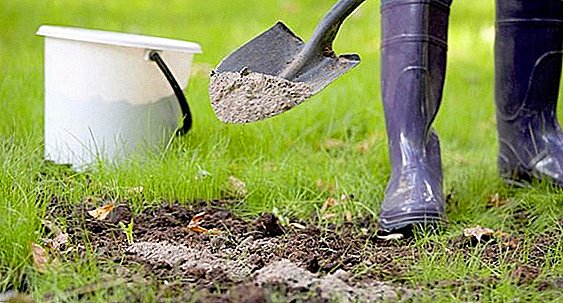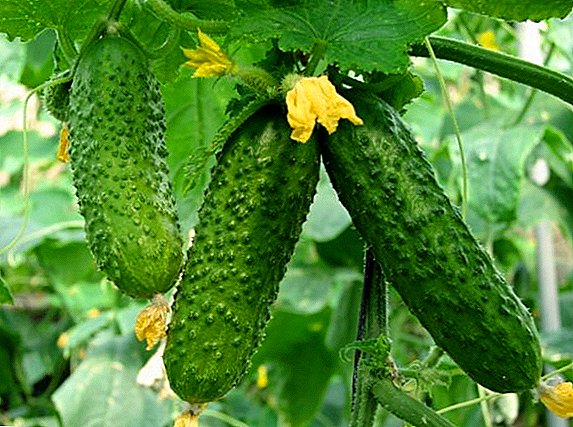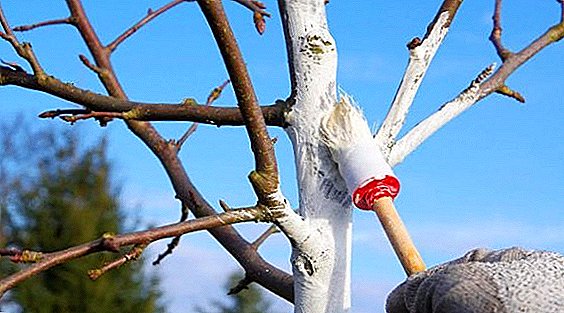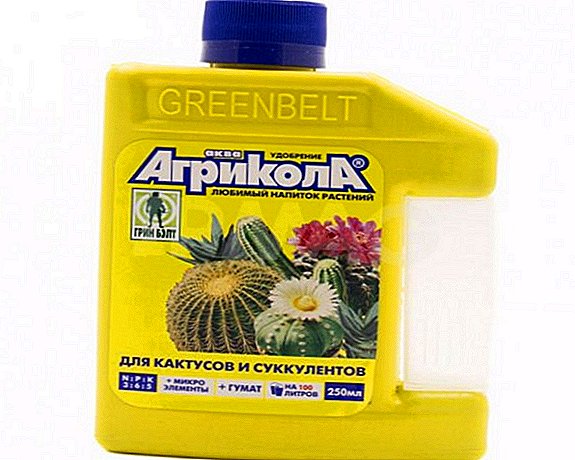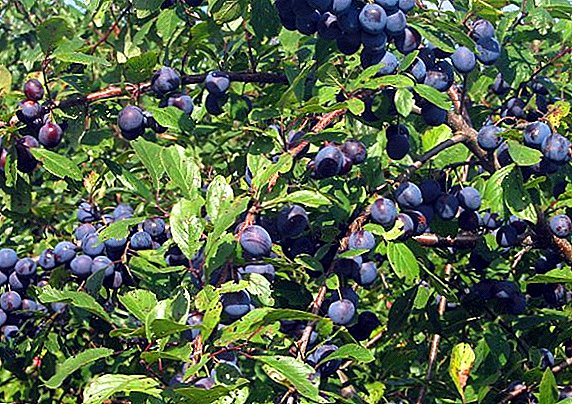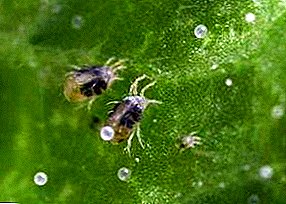
Own greenhouse farming is a great opportunity to have fresh berries and vegetables on the table almost all year round.
It is also a guarantee of eating ecologically pure products without harmful nitrates, various questionable impurities and growth hormones.
The advantages of growing in greenhouses can be listed endlessly: early harvest in spring, the ability to plant rare species of plants and flowers that do not survive in open ground due to unsuitable climatic conditions. For a favorable growth of crops and a rich harvest in the greenhouse, high temperature and humidity are constantly maintained.
The threat to greenhouse plantations are bacteria that reproduce in a wet environment with incredible speed and insect parasites. Bacteria cause many plant diseases. Insects are able to cause no less damage by eating seedlings, flowers, leaves, ripe berries and fruits of vegetable crops.
Major pests
At first glance it may seem that the plants in a cozy greenhouse are in complete comfort and safety. But it is not. A real "trouble" for greenhouses are harmful insects.
In an effort to get from the street closer to the warmth and delicious food, they are able to completely and in a short time to destroy all the work of gardeners and gardeners. The most common are: spider mites, aphids, whitefly, slugs, woodlice, tobacco trips, weevil, caterpillars, marshills, Colorado potato beetle. Let's talk briefly about each of them.
- aphid - small insect (from 1 to 7 mm in length). The color of the body varies from yellow-green to dark, almost black. Aphids multiply quickly. Sometimes settled on the plant in whole colonies. You can see it with the naked eye. Favorite habitats - the underside of young leaves, buds, stem (tips). A plant infected with aphids turns yellow (aphid sucks the juice from its leaves), withers, slows in growth. Tomatoes, cucumbers, eggplants enjoy special love in insects;
- tobacco thrips. Its length is only 1 mm. Insect females come in different colors - from gray-yellow to black. Both males and females have wings framed by “fringe.” A thrips usually lays eggs on the outside of the leaves of the plants. On the affected leaves, light areas first appear, gradually these areas become brown in color, dry and crumble, forming holes. Thrips prefers eggplants and peppers;
- woodlice. The size of the insect - 10-12 mm. It reproduces well in conditions of high humidity, so the greenhouse climate is especially comfortable for them. They damage the plants by gnawing holes in the leaves of various shapes or nibbling around the edges. Do not disdain ripe tomatoes and cucumbers;
- slugs. This pest of green plantings can be easily brought inside the greenhouse with the soil. Slugs with pleasure eat strawberry, cabbage, tomato, pea seedlings. Their appetite is enviable. In one sitting, they are able to destroy almost all shoots in the garden. Slugs are a carrier of various pathogenic bacteria that can harm the plants as much as they do;
- spider mite. Malicious insect. The size of his body is 1-2 mm. Its color is different. Ticks are milky, orange, yellow and red. Ticks multiply at lightning speed and after some time can spread throughout the greenhouse. You can recognize it by light placer points on the leaf and a thin web that entangles the entire surface of the leaves and stems;
- whitefly (white american butterfly). The most common species are the greenhouse or greenhouse whitefly, the cabbage whitefly. The length of these insects does not exceed 3-4 mm. The wings of the butterfly are white and covered with a kind of wax coating. Danger for plants are not so much the whitefly themselves, as their excrement in the form of a brilliant plaque, which they cover the leaf surface. Plaque provokes the development of soot fungus, which can harm the plant and even destroy it;
- weevil. These are small beetles of black color with a long proboscis spout. In the greenhouses mainly inhabited raspberry-strawberry weevil. The bug eats buds, flowers, leaves, bark and roots of plants;
- caterpillars. A sign of their presence in the greenhouse - it is twisted leaves in the web. The insect itself hides inside such a leaf and eats it from the inside;
- Colorado beetle. Usually, the Colorado potato beetle "blisters the eyes" to gardeners in beds with potatoes, but often penetrates into greenhouses. It has a characteristic color: light yellow with brown longitudinal stripes. Attract his greenhouse tomatoes, peppers and eggplants.









The main enemy of greenhouse plants
Among the harmful insects found in greenhouses the greatest danger is the spider mite.
IMPORTANT! As a result of the life of the spider mite, plants die completely!
Harm
The appearance of spider mites in greenhouses can be identified by the characteristic damage to the leaves of this parasite. A scattering of white dots appears on the surface of the leaf, and after a while the web on which the insect moves.
Spider mite multiplies incredibly fast. Females are active and can lay eggs of 300-400 each. Moreover, females ticks are of two types: one type breeds during the whole summer period, the other appears in the autumn, winters and lays eggs in the spring. In year tick development cycles occur from 20 and more. The greenhouse climate is a paradise for these insects.
During the period when the tick is only settled on a plant, it damages all its leaves. Subsequently, moving higher up the stems, the harmful insect destroys the young leaves and fruits. Cellular juice - the main food for spider mites. Exhausted leaves dry, die off, the plant dies.
How to get rid?

Fighting this insect is ungrateful. Mite quickly adapts to various types of chemicals, so treatment with toxic compounds can cause more harm to plants than the parasite itself. Many gardeners and gardeners invent their own ways of getting rid of spider mites and willingly share their experience on the forums on the Internet.
Here are some particularly effective and popular methods:
- high humidity. Mite does not tolerate high humidity, so in the greenhouse it should be high (85%);
- alternation of cultures. Insect breeds poorly on tomatoes, its favorite vegetable is cucumber, it is desirable to alternate the planting of these crops;
- In the greenhouse can to inhabit the phytoseiulus or moth predatorfor which the spider mite is a food. You can buy these insects in any biolaboratory;
- prevention. To prevent tick invasion, it is necessary to carefully examine the leaves of the plants. If parasite is detected, remove affected leaves from crops and burn them. In time to weed out and throw away the weeds from the greenhouse (the spider mite often overwinters on the weeds due to the absence of other sustenance).
If these methods prove to be powerless against the invasion of a spider mite in a greenhouse, it is worth resorting to more stringent control measures:
- spraying colloidal sulfur. Dissolve 80 grams of sulfur in a bucket of water, spray the plants every 10-15 days;
- "Bitoxibacillin". 100 grams of powder per bucket of water. Spray the affected plants once every 10-15 days;
- If the mite has spread throughout the greenhouse premises, spraying should be carried out more often - every 5-7 days.
In extreme cases, you should use the chemistry:
- "Actellic".
- "Fitoverm".
When using these chemicals, you must clearly follow the instructions on the package.
IMPORTANT! These drugs are toxic. Work with them should be carried out in protective suits, glasses and gloves.
The appearance of ants
Considerable problems are threatened by the appearance of ants in the greenhouse. These small insects can greatly harm the root system of plants. Their presence in the greenhouse can be detected by small minks in the soil and by the insects themselves, occasionally appearing on the surface.
Fighting them
There are many methods how to get rid of ants in the greenhouse. It is worth trying to cope with this "brown scourge", without resorting to chemical treatments, so as not to harm the plants and the soil.
Folk ways of getting rid of ants:
- garlic. Ants do not tolerate a sharp garlic smell and tend to leave the room where it is present. Slices of garlic must be decomposed on ant paths, as well as in holes;
- borax. The bait with the addition of this destructive substance can be decomposed at different ends of the greenhouse. To do this, a piece of minced meat must be mixed with half a teaspoon of borax;
- hot ash. Sprinkle with ashes of mink and ant paths;
- millet groats. Ants are very fond of millet, but are not able to digest it and die due to indigestion. Groats need to sprinkle abundantly around the mink and along the paths of insects.
If the methods listed above do not give the desired effect and the ants continue to calmly walk through the greenhouse, they will have to use chemical preparations. Especially effective in the fight against insects insecticide drug "Thunder" and the bait capsule "Absolute".
Prevention
How and what to treat the greenhouse in the spring of spider mites? Experienced gardeners and gardeners recommend processing greenhouses in the fall and after harvesting or in the spring before planting the seedlings.
Before the disinfection procedure, the greenhouse must be rinsed from the inside with a powerful jet of hose with a concentrated solution of soap. Especially carefully washed the joints of the walls, shelves and racks.
Than
There are many means for treating the greenhouse in the spring against pests and diseases. Most of them are toxic, but this can not be avoided, since these drugs are the most effective:
- Sulfur checker. To get rid of pests and prevent their further occurrence will help sulfur bollard (not recommended for structures with metal floors). The ball is placed on a piece of metal, set on fire. In the greenhouse during this procedure it is necessary to close the doors and vents tightly. It is strictly forbidden to be inside the room during disinfection. The greenhouse must remain closed for 24 hours.
- Copper sulfate. One of the most effective methods of disinfection is treatment with copper sulphate. 2 tablespoons of vitriol, soap (nastrogat crumbs) diluted in 10 liters of water. All surfaces of the room are treated with this composition. After that, the soil in the greenhouse shed "Fitosporin". Land, humus in greenhouses should be entered before processing.
This video will help you see how and how to treat the greenhouse in the spring or autumn from pests and diseases:
It is much easier to prevent the appearance of harmful insects in the greenhouse than to get rid of them for a long time and sometimes unsuccessfully, poisoning the soil and the future harvest with various chemicals. It is enough to keep the greenhouse clean, use only proven quality soil, often change the soil layer.


